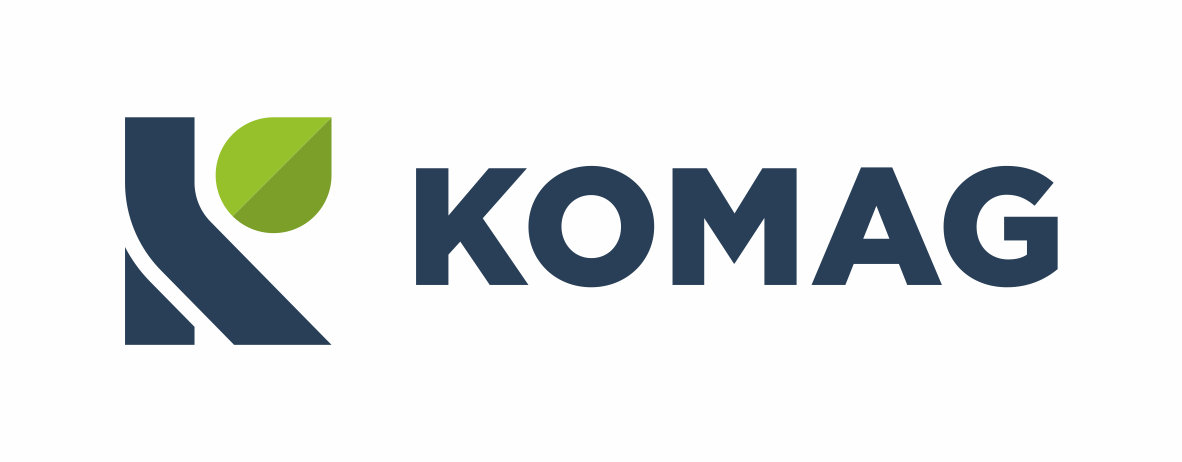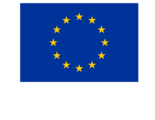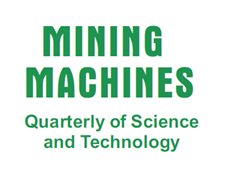Methodology and mathematical model of stand tests of roof bolts dynamic resistance
Pytlik A.
Mathematical model in fire-fighting network in underground coal mine
Mikoś M., Ptak J., Wojciechowski J. Wojciechowski M.
Numerical methods in designing sedimentation equipment
Kołodziejczyk K., Zacharz T.
Stand for laboratory tests of loading process using worm cutting drum
Hamala K., Wydro T.
Proposal of implementation of unequivocal marks for tangential-and-rotational bits of cutting worm drums
Krauze K.
RWU-50 hand rotary-percussive drill supplied with 2% oil-water emulsion
Pac A., Stenka G., Warachim W.
New generation of mining machines and devices manufactured by the ‘RYFAMA’ Factory JSC in Rybnik
Suchoń J., Szlązak J.
Underground storage of dangerous wastes in Poland as a challenge to environmental engineering
Kłeczek Z., Zeljaś D.
The Effect of Human Factor on the Accident Rate at Coal Mines
Bryukhanov A., Mnukhin A.
Improving activities in quality management system
Zając R.
Methodology and mathematical model of stand tests of roof bolts dynamic resistance
Pytlik A.
S u m m a r y
Methodology and mathematical model of stand tests of roof bolts dynamic resistance were presented in the paper. Results of the previous tests of roof bolts, loaded dynamically, carried out according to methodology described in the paper, proved that impact loads cause extreme stresses in roof bolts, which often led to their failure when loads were lower than destructive loads determined during statistical tests.
Mathematical model in fire-fighting network in underground coal mine
Mikoś M., Ptak J., Wojciechowski J. Wojciechowski M.
S u m m a r y
Mathematical model of water network in the under- ground coal mine, which can be used to calculate parameters of the network depending not only on the water distribution but also on changes in configuration of installation was presented in the paper. By use of model the water stream values and pressure drops in every section of pipeline, and a pressure in interesting network points can be calculated.
Numerical methods in designing sedimentation equipment
Kołodziejczyk K., Zacharz T.
S u m m a r y
In the paper the authors presented the possibilities of use of the state-of-the-art modeling methods in the field of environment protection. Systems of computer aid in designing processes using the CFD (Computational Fluid Dynamics), based on the finite elements method were presented. Velocity distribution both in the flood system and in the whole settler were simulated using the CFDesign program. Modernization of the flood system shape in order to obtain an even velocity distribution was conducted on the basis of the obtained results. Due to the fact that the basis of settlers operation is the use of sedimentation process, i.e. gravitational sinking of the grains in the continuous medium, and that the process can be considered as one of the most complicated both from the mathematical and simulation point of view, the second package of the FLUENT software, which has much wider possibilities of the one-, two-, and multiphase simulations was presented. It confirms a variety of different domains in which it is used. In the paper the authors wanted to point out that the use of the software helps to eliminate expensive experimental research work at the stage of designing and modernization of machines. It is important to remember that a verification in the laboratory stand is necessary at the end of designing process due to the safety of machine operation.
Stand for laboratory tests of loading process using worm cutting drum
Hamala K., Wydro T.
S u m m a r y
In the paper a discussion referring to run-of-mine load process by worm cutting drum was presented. Mechanism of load process with the use of worm cutting drum was described, and relationships meeting of which have a great impact on proper and effective loading process were given. Values, which influence the process were not determined, and parameters, which amounts and method of selection were specified on the basis of empirical studies, were deter- mined. In order to verify their impact on loading process, efficiency guidelines for laboratory tests on loading process were formulated, and a conception of design of test stand was presented. Realization of tests will enable to specify guidelines for a selection and design of worm cutting drums in the future, taking into account a proper and effective loading process.
Proposal of implementation of unequivocal marks for tangential-and-rotational bits of cutting worm drums
Krauze K.
S u m m a r y
Use of different types of roadheader bits, especially tangential-and-rotational bits of cutting worm units, should provide minimal resistance of mining process, and the best possible durability of cutting tools, cutting drums and mining machine. The most important problem in this case is a such position of cutting bits which enables suitable operational cutting angles. Analytical method for determination of operational cutting angles, developed for analytical purposes, requires a knowledge of design parameters of bit, holder and cutting drum. Unfortunately, there is a lack of such data in catalogues of companies which manufacture cutting tools and holders what makes calculations difficult. That is why implementation of permanent marking of selected design parameters, in order to make a selection of cutting bit or holder easier, is suggested.
RWU-50 hand rotary-percussive drill supplied with 2% oil-water emulsion
Pac A., Stenka G., Warachim W.
S u m m a r y
The paper describes the RWU-50 hand rotary-percussive drill supplied with 2% oil-water emulsion. This drill is used to drill blast holes and bolting holes in the rocks which hardness is higher than 30 MPa. Effectiveness of hard rocks drilling process is secured by the MH-1 hydraulic hammer used in a drill design, which has a frequency of impacts higher than 6000 min‑1, and unit impact force equal to 32 kN when supply pressure is equal to 20 MPa.
New generation of mining machines and devices manufactured by the ‘RYFAMA’ Factory JSC in Rybnik
Suchoń J., Szlązak J.
S u m m a r y
Now in Poland there is an urgent need of neutralization of more than 6 000 parts of uranium fuel (HLW) burned in reactors and 5 000 m3 of middle- (ILW) and low- (LLW) active wastes. Within the next ten years, more than 300 000 m3 of radioactive wastes and about 106 Mg of other dangerous wastes (per year) can appear, depending on development of the nuclear power engineering. Taking into account experiences of the West Europe countries and USA in handling with dangerous wastes, their processing and neutralization by the underground storage is the only safe and legally allowed method. In the light of these facts consideration of the possibility of building an underground waste storage in Poland is the actual challenge for the environmental engineering. The paper proved that a salt deposit in the Lubinsko-Glogowski Copper District (LGOM) satisfies all the criteria necessary to develop an underground dump for dangerous wastes there.
Underground storage of dangerous wastes in Poland as a challenge to environmental engineering
Kłeczek Z., Zeljaś D.
S u m m a r y
Now in Poland there is an urgent need of neutralization of more than 6 000 parts of uranium fuel (HLW) burned in reactors and 5 000 m3 of middle- (ILW) and low- (LLW) active wastes. Within the next ten years, more than 300 000 m3 of radioactive wastes and about 106 Mg of other dangerous wastes (per year) can appear, depending on development of the nuclear power engineering. Taking into account experiences of the West Europe countries and USA in handling with dangerous wastes, their processing and neutralization by the underground storage is the only safe and legally allowed method. In the light of these facts consideration of the possibility of building an underground waste storage in Poland is the actual challenge for the environmental engineering. The paper proved that a salt deposit in the Lubinsko-Glogowski Copper District (LGOM) satisfies all the criteria necessary to develop an underground dump for dangerous wastes there.
The Effect of Human Factor on the Accident Rate at Coal Mines
Bryukhanov A., Mnukhin A.
S u m m a r y
The paper presents numerical evaluation of human factor affecting the accident rate at coal mines. The calculations habe been carried out on the basis of a “man-machine-environment” system approach within specified confidence intervals. Mathematical techniques of conditional probability and high level statistics have been used to this end.
Improving activities in quality management system
Zając R.
S u m m a r y
When the Quality Management System is implemented to the organization, the system’s constant control is significant for its effectiveness. Without a constant and proper control of the system it has no chance for further development, and what is more – old practices often come back. Quality system control includes not only monitoring of realization of correction and prevention activities, but also a development of pro-quality awareness of employees and undertaking improvement activities in the organization. Constant improvement, system thinking, and strategic management determine a work style, not the activities performed only to solve a problem for a short time.
KOMAG Institute of Mining Technology
MISSION
Innovative solutions for economy.
VISION
Research and development centre of organizational and proprietary structure adapted to the market activity in the European Research Area and of the organizational culture creating a friendly climate for generating new ideas and realizing innovative activities, i.e. transforming new ideas into new products.
Read moreDesign
Designing of machines and equipment
Tests
Laboratory of Applied Tests
Certification
Assessment of products' conformity
Projects
Projects realized by the KOMAG Institute from European Funds
© 2025 KOMAG Institute of Mining Technology





 Badanie bezpieczeństwa wyrobów
Badanie bezpieczeństwa wyrobów Klaster Maszyn Górniczych
Klaster Maszyn Górniczych